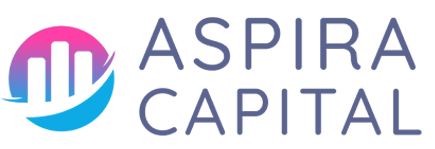Table of Contents
- Understanding Local SEO
- Importance of Local SEO
- Optimizing Your Google My Business Listing
- Conducting Local Keyword Research
- On-Page SEO Techniques for Local Businesses
- Building Local Links
- The Importance of Online Reviews
- Local Content Marketing Strategies
- Using Social Media for Local Customer Engagement
- Monitoring Your Local SEO Performance
Understanding Local SEO
Local SEO involves optimizing your search engine optimization strategies specifically for a local audience. It ensures your business appears in local search results when potential customers are looking for products or services similar to yours nearby. With the rise of mobile searches, local SEO has become essential for businesses aiming to attract nearby customers.
Importance of Local SEO
Investing in local marketing can significantly impact your business’s performance. Here’s why it’s essential:
- Increased Visibility: Local SEO enhances your online visibility among local consumers actively looking for your offerings.
- Targeted Traffic: By appearing in local search results, you attract users who are more likely to convert into customers.
- Competitive Advantage: Local SEO can help you outperform competitors who are not utilizing these strategies effectively.
- Enhanced Customer Engagement: Connecting with local customers fosters relationships and encourages loyalty.
Optimizing Your Google My Business Listing
Google My Business (GMB) is a critical tool for improving your local search rankings. Properly optimizing your GMB profile supports your small business SEO efforts. Here are essential tips for GMB optimization:
- Complete Every Section: Fill out your business name, address, phone number, website, operating hours, and services offered.
- Use Keywords Strategically: Include relevant keywords in your business description to enhance visibility.
- Add High-Quality Images: Visual representations attract users and encourage them to learn more about your business.
- Post Regular Updates: Keep your customers informed with posts about promotions, events, or new products.
Conducting Local Keyword Research
Performing thorough local keyword research is fundamental to your digital marketing success. Focus on identifying keywords with local intent and strategize based on their findings.
- Utilize SEO Tools: Tools like Google Keyword Planner and Ahrefs can help you find local-specific keywords.
- Analyze Competitors: Investigate which keywords competitors are ranking for and include those in your strategy.
- Long-Tail Keywords: Focus on long-tail keywords that typically include local identifiers (e.g., “best coffee shop in [city]”).
On-Page SEO Techniques for Local Businesses
Implementing effective on-page SEO techniques is vital for local businesses wanting to improve their online visibility.
- Title Tags and Meta Descriptions: Ensure they contain local keywords and accurately reflect your business offerings.
- Header Tags: Organize your content with H1, H2, and H3 tags, incorporating local keywords where appropriate.
- Location Pages: For businesses serving multiple locations, create separate location-specific pages for better relevance.
- NAP Consistency: Maintain consistent Name, Address, and Phone number (NAP) across all platforms and directories.
Building Local Links
Creating backlinks from local websites can greatly benefit your local SEO efforts. Building a strong link profile enhances your credibility in the eyes of search engines.
- Engage in Local Partnerships: Collaborate with local businesses or organizations for mutual exposure through links.
- Sponsor Local Events: Being featured on event websites can boost your visibility and link profile.
- Participate in Local Directories: Submit your business to local directories and industry-related sites for additional backlinks.
The Importance of Online Reviews
Online reviews play a crucial role in shaping your business reputation and driving local customer engagement. They can have a significant impact on your local SEO efforts.
- Encourage Customer Reviews: Request reviews from satisfied customers on your GMB and other review sites.
- Respond to Reviews: Engage with customers by responding to both positive and negative reviews.
- Monitor Review Platforms: Keep track of reviews on sites like Yelp and TripAdvisor to maintain your online presence effectively.
Local Content Marketing Strategies
Content marketing remains a powerful tool for drawing in local customers. Here are strategies designed for local content optimization:
- Blog About Local Events: Share posts related to upcoming events or happenings in your area to attract local interest.
- Create Local Guides: Produce comprehensive guides that showcase local attractions or services that your business relates to.
- Use Geo-Targeted Keywords: Incorporate localized keywords into your blog posts and website content.
Using Social Media for Local Customer Engagement
Social media offers a robust platform for engaging with local customers and enhancing your overall customer attraction strategy.
- Utilize Location Tags: Tag your content with your business location to increase discoverability among local users.
- Engage with Local Influencers: Partner with local influencers to reach a broader audience and establish credibility.
- Run Local Promotions: Use social media to advertise promotions specifically targeting local customers.
Monitoring Your Local SEO Performance
Tracking your local SEO efforts is essential for continuous improvement. Utilize tools and performance metrics to evaluate your progress.
- Google Analytics: Use Google Analytics to monitor traffic sources and behavior of local users on your website.
- GMB Insights: Check Google My Business Insights for data on how customers are finding your listing.
- Rank Tracking Tools: Employ tools to monitor how your website ranks for local keywords over time.
By implementing these local SEO strategies, businesses can significantly improve their online presence, attract nearby customers, and foster long-lasting relationships that contribute to ongoing success.









